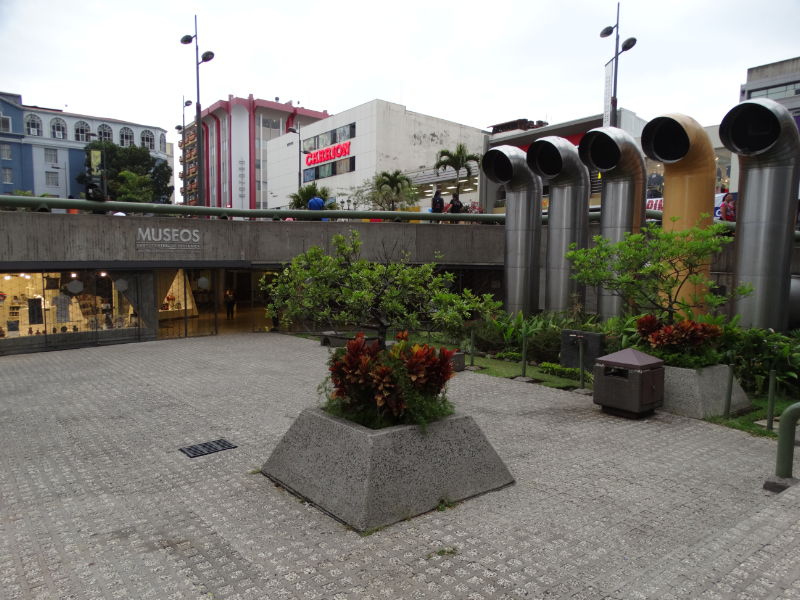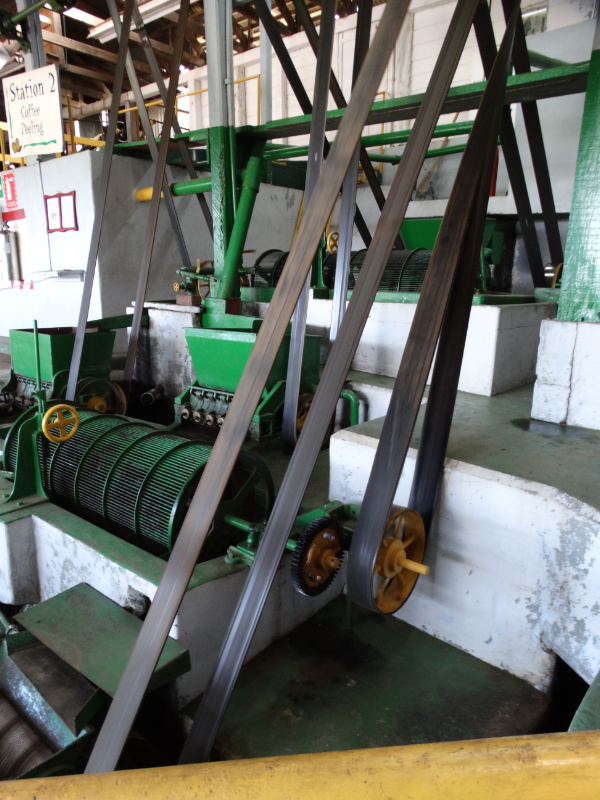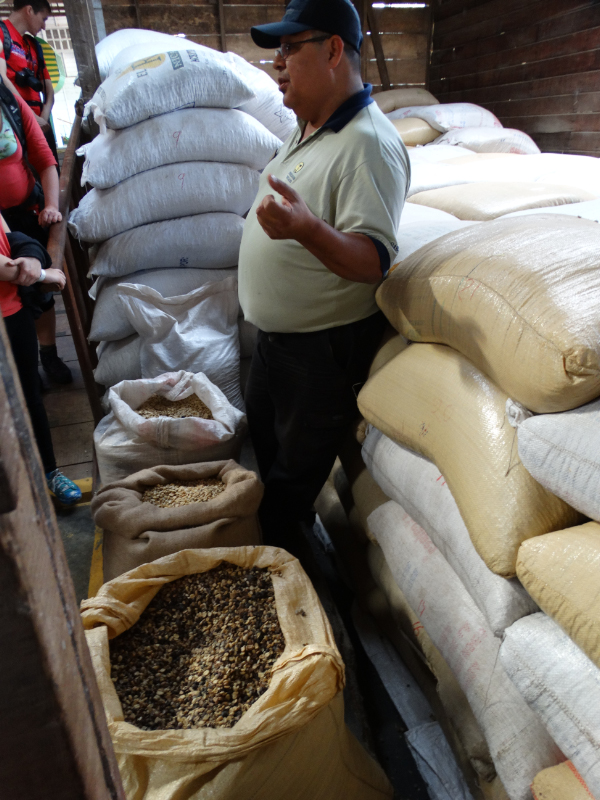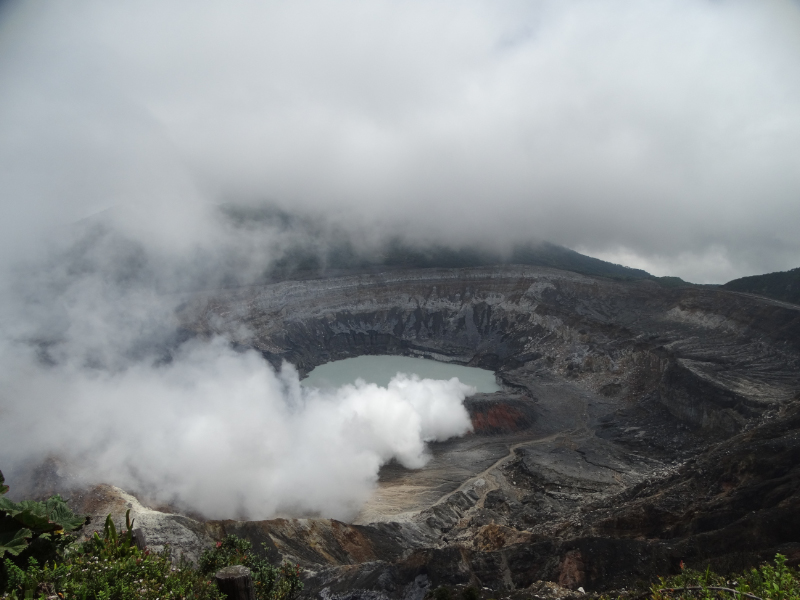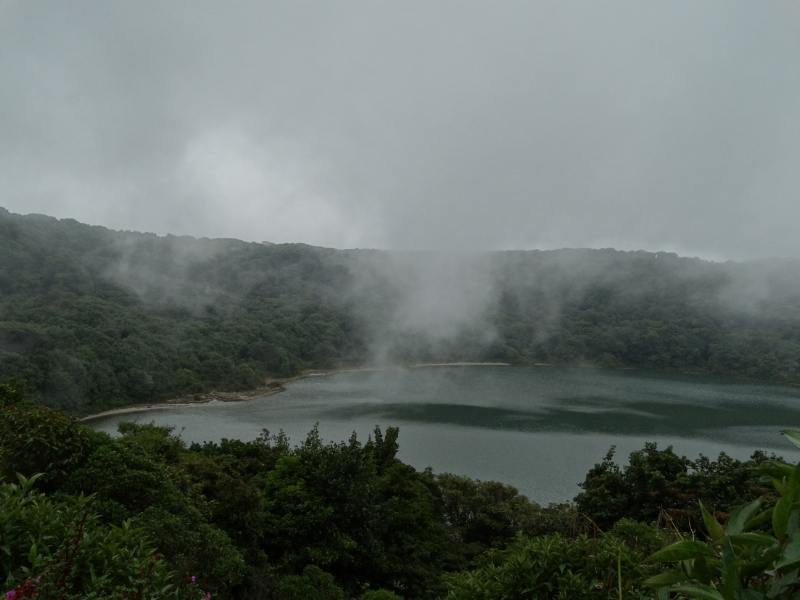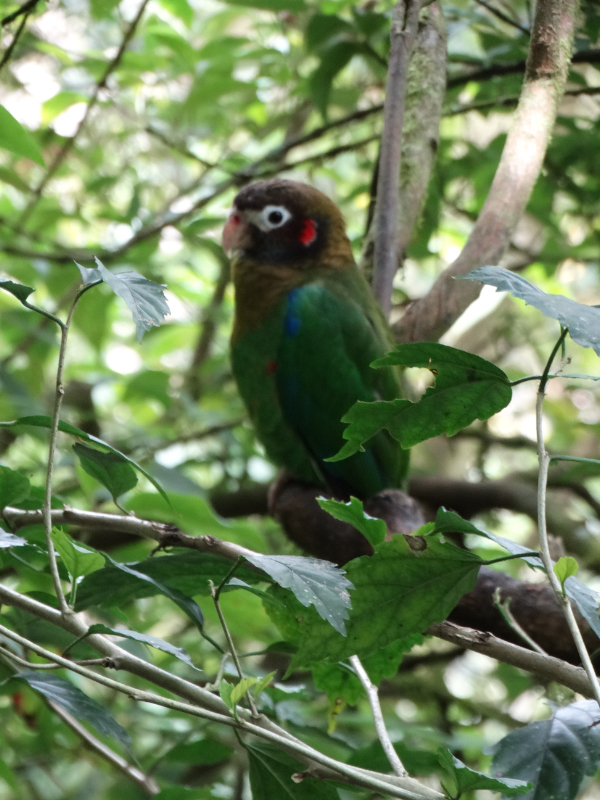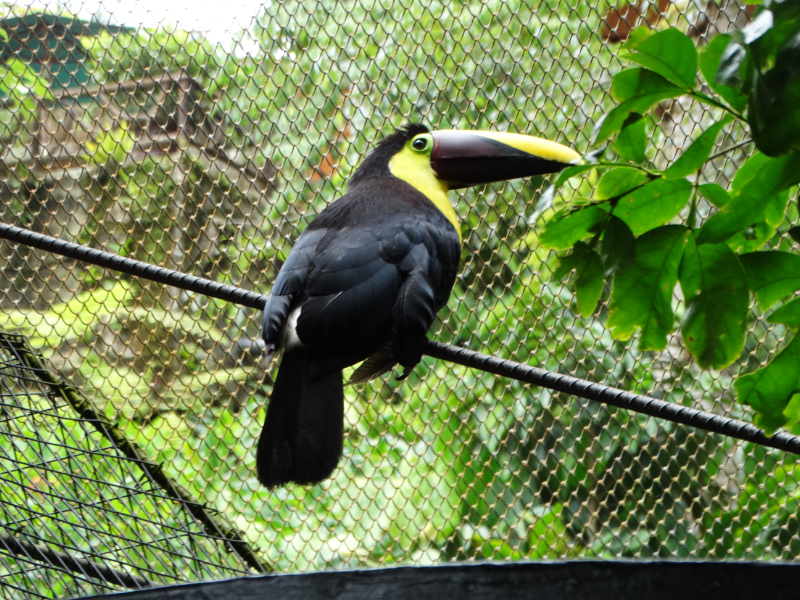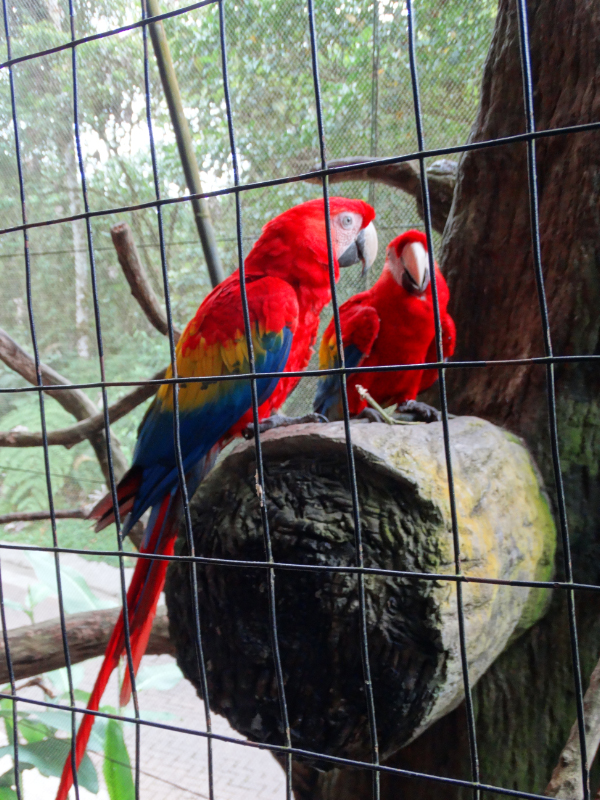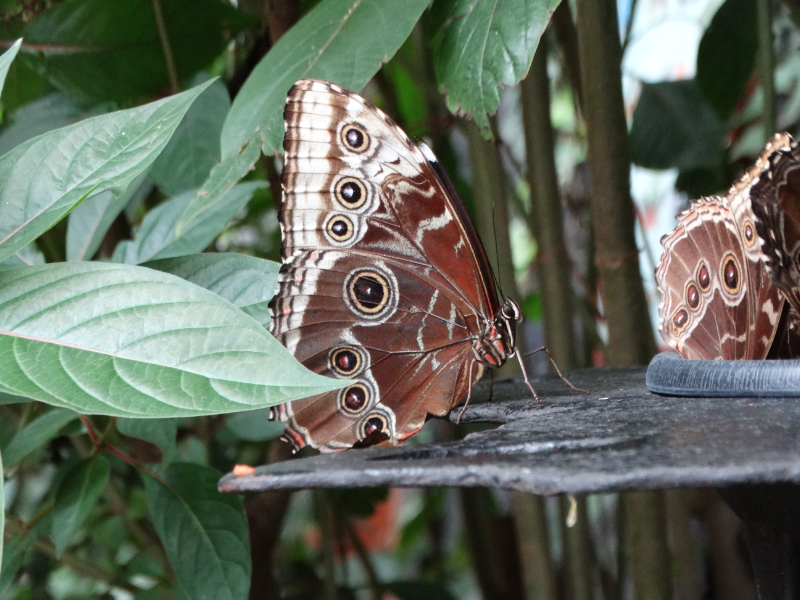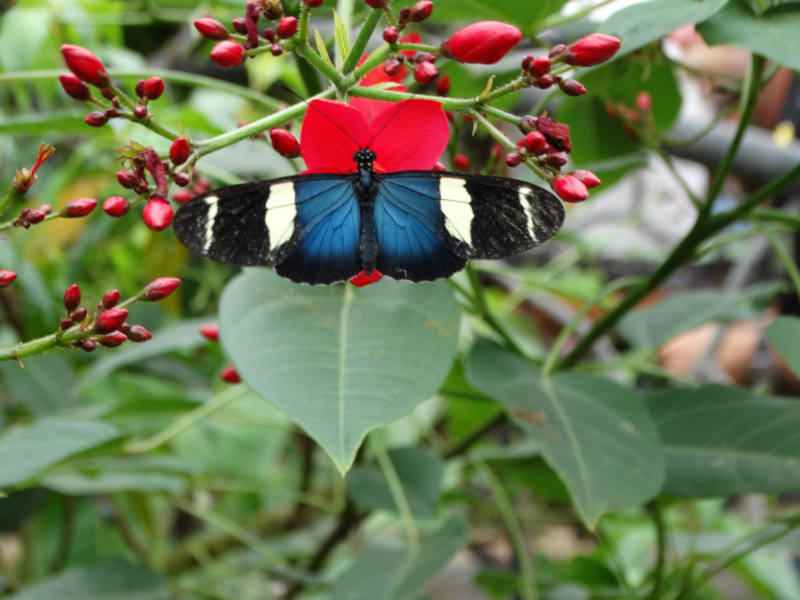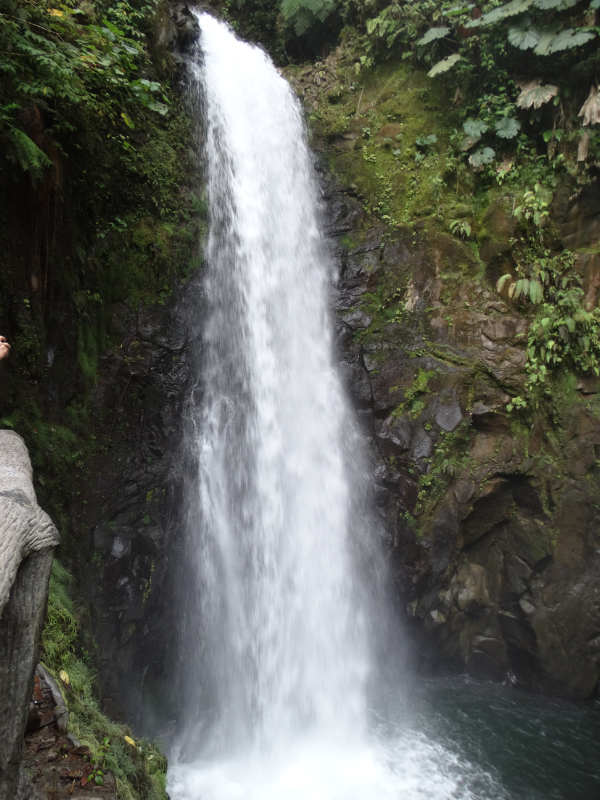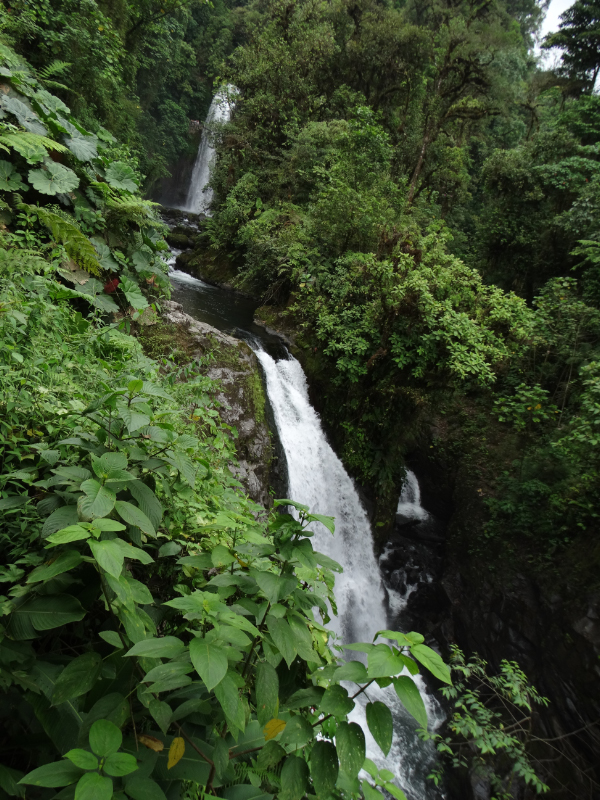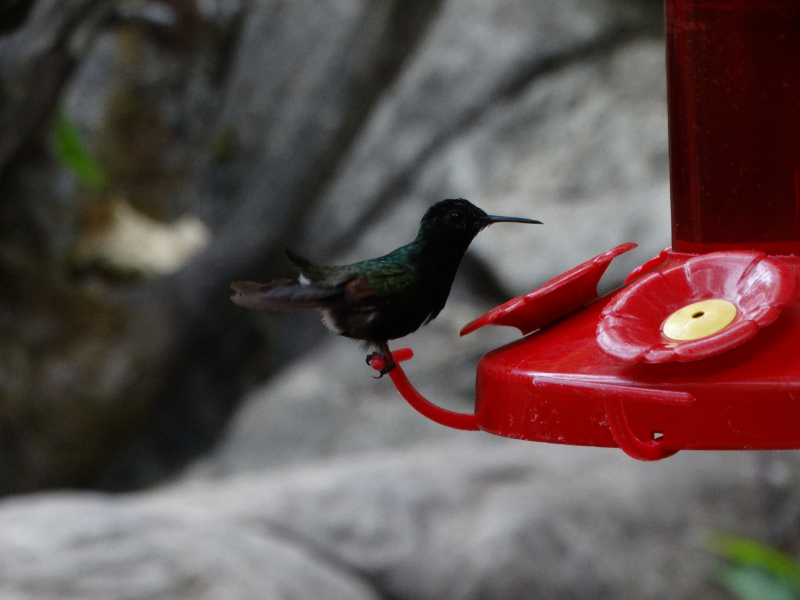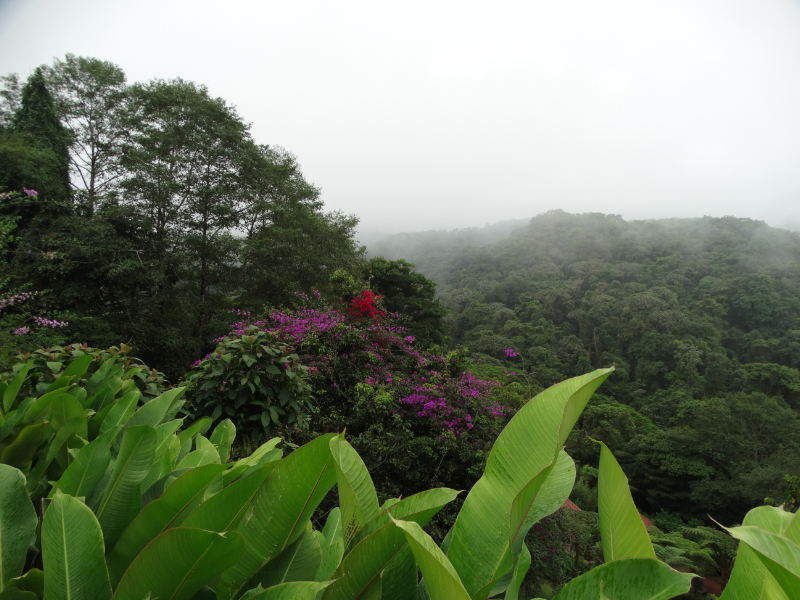Wednesday 29 April to Saturday 2 May
We flew in to San Jose, from Boquete in Panama, in a light aircraft and got bounced around as we flew through the clouds. This is the weather to expect living at 1000m as the wet season approaches. Clear mornings, a build-up of clouds then a thunderstorm in the afternoon. The thunder and lightning didn’t always bring rain.
We found our way around the main part of the city which consists of a mile long pedestrian street with a mixture of streets for traffic and streets for pedestrians crossing it.
It was very hard to find tourist information about San Jose, however Costa Rica has the highest proportion of ‘green areas’ than any other Latin American country. Most tourist activities are related to ecotourism.
We explored the city and struggled to find details of some of the statues within our normal places of research. There is a delightful statue of a large woman in the shopping mall, and a collection of statues which appeared to be dedicated to the peasants or workers outside the Banco Central de Costa Rica.
The Teatro Nacional is a beautiful building set within Plaza de la Cultura. The square is a meeting place full of pigeons and souvenir vendors. The cafe at the theatre offers coffee from each of the regions in Costa Rica. Coffee is a huge industry and they are very proud of it. Interestingly, bananas, not coffee, is their biggest export.
After our coffee tasting we joined the tour of the theatre. It is small but beautifully proportioned and built early in the 20th century using a wide range of styles including Baroque, Italianate, French, Neo-classical.
In such a small country this national treasure is adaptable. The front seats are removed when an orchestra pit is required, and all the seats can be removed and the floor lifted and levelled for ballroom dancing and official dinners, as was the case when both JFK and Barack Obama visited during their respective presidencies.
We then spent 2 hours in the Museo Nacional de Costa Rica museum which is built under the same square in the shape of an inverted pyramid. The focus of the permanent exhibition was the gold artefacts that had been discovered in pre-Hispanic graves and how archaeologists had pieced together the stories of life and culture from them.
San Jose is surrounded by mountains and many of these are volcanos – some extinct and some active. After an abortive attempt to find [an extinct] volcano in Panama, where the clouds kept closing in on us, we took the Poás volcano tour. It was a full day, starting at 6am. You don’t often see the Stainsby’s out of bed, much less showered and dressed and in the lobby at that time.
First stop was the Doka Coffee Estate, where we were given a typical Central American ‘tourist’ breakfast of juice, scrambled eggs, rice and black beans and plantains, the sweet cooked bananas. Coffee flowed, as you might imagine on a coffee farm
Unlike the boutique coffee farm we visited in Panama, where natural drying of the cherries was used, this was a big commercial operation.
The farm covers 10,000 acres and uses the ‘wash’ method to dry their beans. Essentially it means the cherries are washed, de-skinned and then dried on concrete slabs. It is not purist and the coffee taste proved it.
Poorer Nicaraguans come to Costa Rica to pick coffee cherries. And I thought Costa Rica looked poor.
Our next stop was a strawberry farm where strawberries, sweet wine, coffee from another farm and souvenirs were offered for sale. We were invited to try one strawberry. Mine was delicious – full of cool mountain air.
We drove further up the volcano, reaching 2574m above sea level. Our guide, Max, was clever. Not only did he keep us on schedule for the day, he also warned us of the limited chance to see into the active volcano which is most often shrouded in cloud. He had contingency plans built around the second volcano crater which is now a lake. ‘If the crater is full of cloud, walk to the lake and then back again. By then the cloud will surely have lifted’.
But, as it happened, the cloud had lifted and we could see the crater, albeit full of steam. Max was over excited and admitted that only 20% of his tour groups get the view we had.
We walked up to the lake in the crater, which had more cloud covering it than the crater. We then took a beautiful 2km walk back through the cloud forest to our bus. Cloud forests rely heavily on moisture coming out of clouds in the dry season. It is where bromeliads that hold water in their leaves provide for bugs, frogs and birds. Bromeliads were one of Bruce’s mum, Brownie’s favourite plants, and it was a happy reminder of my time with her.
Next part of the tour was the cloud forest of La Paz Gardens. It is a private garden with a number of rescued wildlife on display, and a series of waterfalls tumbling down cliffs. There were lots of photo opportunities of frogs and butterflies, toucans and hummingbirds, monkeys and jaguars.
The waterfalls were the most spectacular we have seen on this trip, other than Iceland. But photographing the first then the second then the third, perhaps it all merged into a single image.
I’ve complained a lot about tour guides, lacking control or information or the English language. Max had it all – a slick tour operator who managed every sentence in both English and Spanish languages, tracked us so we didn’t get lost and kept to the schedule. There really aren’t many like him.
e_header.jpg)




























